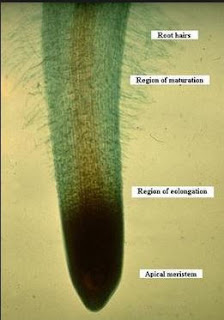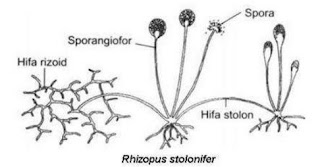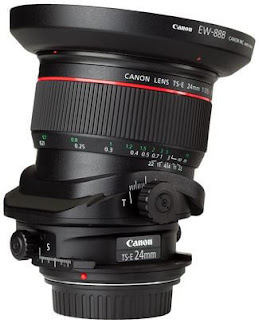Understanding of forests, Forest types, and benefits
The forest is the gift of God that is worth for us to take care of human hands that is Ignorant. The forest is very meaningful for any of the kinds of life on Earth. Inevitably, the meaning of forests brings an infinite or even a million benefits to humans. Moreover, if we retreat behind a little, about the process of the evolution of the Earth becomes green and brought forth the man really is amazing.
How not, humans are created with a set of resources that is able to be utilized for a man to keep his survival and also living beings around. By him that, given the abundant human lucky blessing by God Almighty.
Humans need to utter a profuse gratitude over the gifts to benefit by keeping the forest for the next generation or the next successors and also practiced forest benefits not only for humans but rather provide benefits for other creatures of his life.
There are many ways of addressing the damage to the forest and the methods used. Even when we try to find it on google. Thousands of ordinary writing-thousands of formal information, up to a scientific journal from development researchers also have reached millions to address environmental damage.
The problem is the power and the desire of the man himself who wanted to move quickly looked at the future but ruled out going to other ecosystem-ecosystem requires an understanding of the forest will be a benefit that must be consciously and properly understood by the man himself.
If not, then even the catastrophe will be infected man himself, until the drought where-where, and hunger is rampant, both for humans especially to animals.
Just imagine, a variety of human resource development is loaded will capitalism and tend to exploit the natural resources in the short term bring such great benefits for a region, the country and the world community as well. But the benefits are gone if defined in space and time the long-term benefits are simply false aliases and the long-term nature of the damage.
Let's follow the example of environmental damage or damage to the jungle that occurred in a foreign country, such as China. The world's largest population, China with her progress in growing the economy and other fields and even rode the US developed countries. Such a huge benefit for China to be able to make a superpower such as the United States made the fear with the greatness of mind.
But on the other hand, the progress of China apparently ended some fifty years. China is currently experiencing enormous problems, for example, climate irregularities and pollution everywhere. This is fatal to the survival of the Chinese citizens and countries that are in fact the entire surrounding living things upfront.
Even in some locality in China should use a mask at the time of activity. Not only that, in the continent of America also often occur. The greatest strength of all this is not denied, apparently experienced a problem that is also extremely large. It can be said the advancement of technology, military etc. brings the plagues for America.
Rapid climate changes and even a tornado often occurs everywhere, make various disadvantages local people and also living beings who live in America.
Impacts of environmental damage due to the human behavior itself. The impact, in fact, can not happen if forest and the environment, as appropriate. So for every community needs a human to understand or rightly understanding of forests, environmental, types, and benefits of forests.
The author also considers that this information is not enough means, why?. Because this information is just the basic rhetoric though with an accurate reference. This information is only being the fruit of the lips and runs out on sheets to give answers to your teacher or lecturer, or give to friends.
This information can be very mean if friends can take advantage of this information properly with the practice in the neighborhood of the alias information on forests should be applied in the surrounding environment.
The forest is a great gift and God Almighty the mandate conferred to each nation and is a wealth that is controlled by the State. Forests provide abundant benefits for all humanity, because mandatory be grateful, administered, and utilized optimally, and preserved to the large function and aims to the prosperity of the people, for the current generation of as well as well as future generations.
The entire forest is a forest area that is controlled by the State. Mastery of commonly referred to the forest with authorized the Government to:
Forests are further divided according to the status of State forest and also the forest rights. The state forest is a forest located in the land that is not encumbered by rights over the land. While Woods is Woods right on land which is vested with rights over land.
The forest is the gift of God that is worth for us to take care of human hands that is Ignorant. The forest is very meaningful for any of the kinds of life on Earth. Inevitably, the meaning of forests brings an infinite or even a million benefits to humans. Moreover, if we retreat behind a little, about the process of the evolution of the Earth becomes green and brought forth the man really is amazing.
How not, humans are created with a set of resources that is able to be utilized for a man to keep his survival and also living beings around. By him that, given the abundant human lucky blessing by God Almighty.
Humans need to utter a profuse gratitude over the gifts to benefit by keeping the forest for the next generation or the next successors and also practiced forest benefits not only for humans but rather provide benefits for other creatures of his life.
There are many ways of addressing the damage to the forest and the methods used. Even when we try to find it on google. Thousands of ordinary writing-thousands of formal information, up to a scientific journal from development researchers also have reached millions to address environmental damage.
The problem is the power and the desire of the man himself who wanted to move quickly looked at the future but ruled out going to other ecosystem-ecosystem requires an understanding of the forest will be a benefit that must be consciously and properly understood by the man himself.
If not, then even the catastrophe will be infected man himself, until the drought where-where, and hunger is rampant, both for humans especially to animals.
Just imagine, a variety of human resource development is loaded will capitalism and tend to exploit the natural resources in the short term bring such great benefits for a region, the country and the world community as well. But the benefits are gone if defined in space and time the long-term benefits are simply false aliases and the long-term nature of the damage.
Let's follow the example of environmental damage or damage to the jungle that occurred in a foreign country, such as China. The world's largest population, China with her progress in growing the economy and other fields and even rode the US developed countries. Such a huge benefit for China to be able to make a superpower such as the United States made the fear with the greatness of mind.
But on the other hand, the progress of China apparently ended some fifty years. China is currently experiencing enormous problems, for example, climate irregularities and pollution everywhere. This is fatal to the survival of the Chinese citizens and countries that are in fact the entire surrounding living things upfront.
Even in some locality in China should use a mask at the time of activity. Not only that, in the continent of America also often occur. The greatest strength of all this is not denied, apparently experienced a problem that is also extremely large. It can be said the advancement of technology, military etc. brings the plagues for America.
Rapid climate changes and even a tornado often occurs everywhere, make various disadvantages local people and also living beings who live in America.
Impacts of environmental damage due to the human behavior itself. The impact, in fact, can not happen if forest and the environment, as appropriate. So for every community needs a human to understand or rightly understanding of forests, environmental, types, and benefits of forests.
The author also considers that this information is not enough means, why?. Because this information is just the basic rhetoric though with an accurate reference. This information is only being the fruit of the lips and runs out on sheets to give answers to your teacher or lecturer, or give to friends.
This information can be very mean if friends can take advantage of this information properly with the practice in the neighborhood of the alias information on forests should be applied in the surrounding environment.
Understanding forest: what is a forest?
Understanding of the forests is a whole ecosystem that consists of a stretch of land in the form of natural resources biodiversity which in general there are trees in the natural environment, the Fellowship of one another that cannot be separated.The forest is a great gift and God Almighty the mandate conferred to each nation and is a wealth that is controlled by the State. Forests provide abundant benefits for all humanity, because mandatory be grateful, administered, and utilized optimally, and preserved to the large function and aims to the prosperity of the people, for the current generation of as well as well as future generations.
The entire forest is a forest area that is controlled by the State. Mastery of commonly referred to the forest with authorized the Government to:
- Set up and take care of everything in accordance with forest, the area of forests and forest products.
- Sets the status of a specific u.s. forest area or areas of the forest area of the US, not a forest area.
- Set up and define the legal relationships between the forests, as well as organizing the legal deed will forestry.
Forests are further divided according to the status of State forest and also the forest rights. The state forest is a forest located in the land that is not encumbered by rights over the land. While Woods is Woods right on land which is vested with rights over land.




















